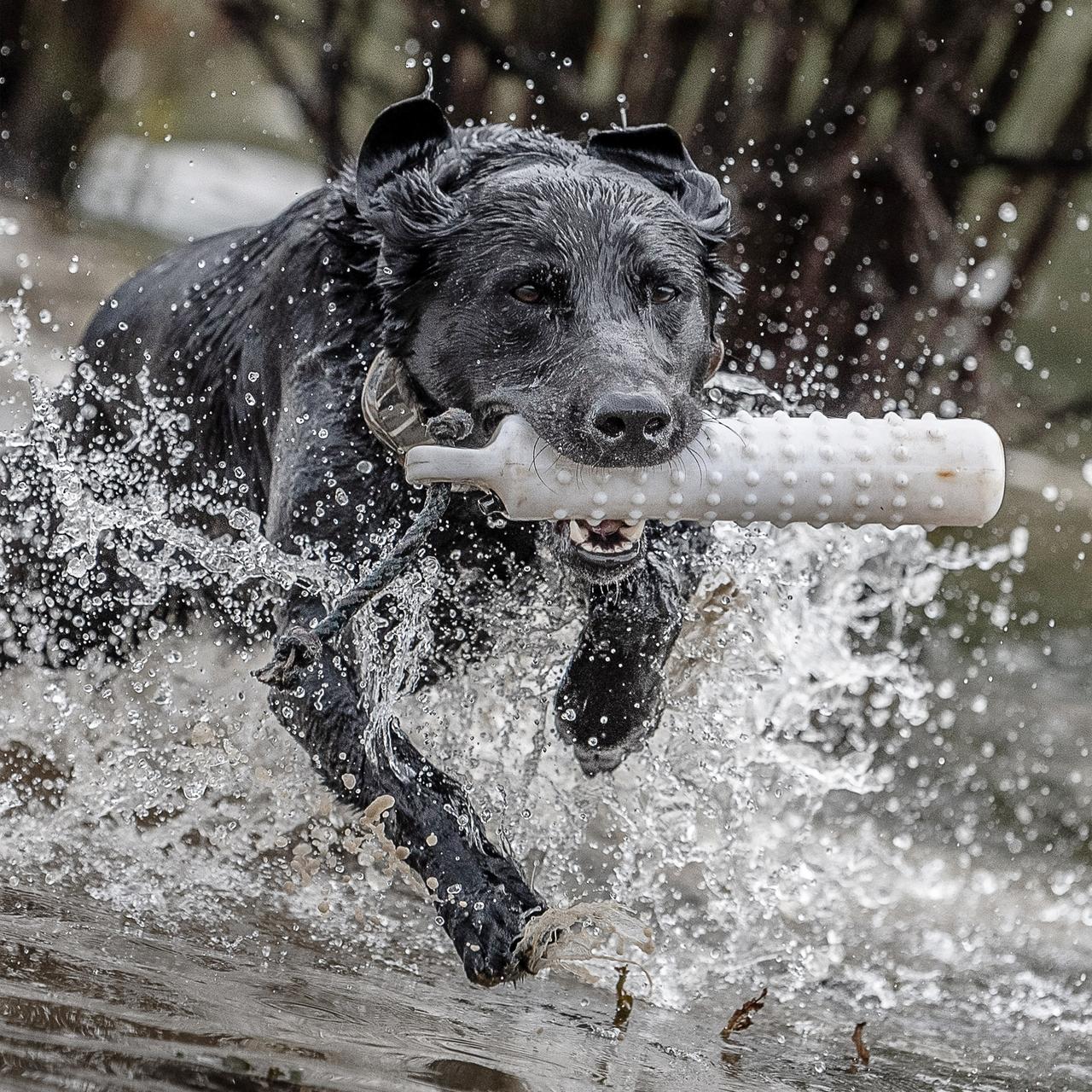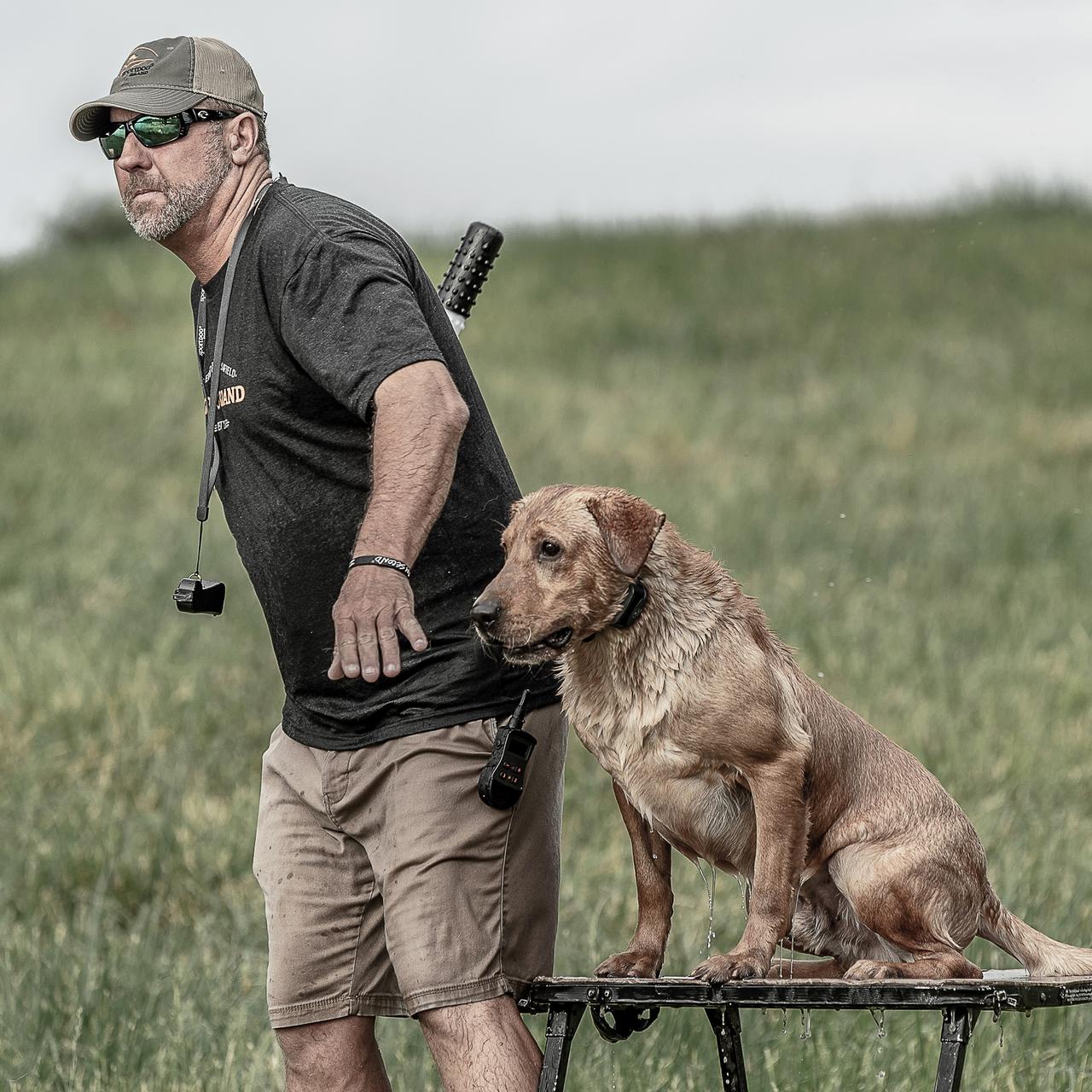
A Great Summertime Water Exercise for Retrievers
Posted by Chris AkinIf you've got a young retriever and you're on the hunt for a top-notch training exercise for the summer, I've got a ripper that's dead easy but also real beneficial and informative for both you and your dog.
The drill I’m gonna describe is pretty basic as a “de-cheating” method, but it actually accomplishes much more than that. What's de-cheating? Most retriever trainers use that term when they’re talking about training to ensure that their dog runs or swims a straight line on the way out to a bird and takes that same line on the return.
Your dog should run and/or swim in a straight line in the direction you send it rather than deciding for itself how to get to a bird. If you're training a dog for a hunt test or field trial, you'll want to show that your dog follows your commands because you're in charge. A dog that skirts around cover instead of going through it, or runs along the bank as far as it can before jumping into the water, isn't really following your directions.
If you're a hunter, you might say 'so what,' as long as my dog gets the bird, that's all that matters. That's fine if that's your decision, but I reckon if you want your dog to be the best it can be you'd want to work on drills that help you more effectively communicate with and direct your dog to take your commands, not rely on luck.
My de-cheating drill achieves a few things. First, it gets you comfy with using your SportDOG Brand e-collar. I meet heaps of retriever blokes in my training seminars who are scared to press the transmitter button for fear of stuffing up their dog. This drill will help you get over that.
Second, this is a fun drill to do in the summertime. Water training is a safe way to exercise your dog when it’s hot without the risk of overheating it.
Lastly, this forces your dog to really pay attention to your commands as it learns to respect you and the e-collar.
One very important note: Before you start this drill, your doggo must have already been introduced to the e-collar. That means 1.) Your dog must understand that following a command is how to switch off the correction, and 2.) You've figured out the least amount of e-collar pressure needed to get your dog to respond. We've got heaps of articles and videos right here on the SportDOG Brand website to help you learn the right way to introduce your dog to an e-collar.
It's best to run this exercise on a square billabong, or at least one that has well-defined corners. I use a billabong that's about 50 metres square. Here's how the drill works ...
Start at one corner with your dog sitting at heel. Chuck a bumper out towards the middle of the dam. This isn't meant to be a challenge; it's just an initial warm-up swim. (I'm assuming here that your dog has already been introduced to water and genuinely likes retrieving in it. If not, you're not ready for this drill.) Now, with your dog sitting at heel again, do another chuck, but this time throw the bumper 20 to 25 metres parallel with the shore so it lands about 1.5 metres or so from the bank.
Now, when you send your dog, it’s very likely that it will run around the edge of the pond and down the bank to get to the bumper. No worries. It’s natural for a dog to want to take the least amount of water necessary to make the retrieve, and at this point you’re not going to do anything to correct it. But what happens next is super-important in the de-cheating process.
It's pretty much a given that after your doggo jumps in for what's now a real quick fetch, it'll hop out onto the bank so it can leg it down the shore to get back to ya. As soon as its paws touch the shore, you're gonna start nudging it with the e-collar on the lowest setting you reckon your dog can feel. Just to be on the safe side, let's say that's a Level One. As your mate is running back to you, you're gonna keep tapping the transmitter button: bump, bump, bump... until your dog's made it all the way back to you. That experience should've been a bit uncomfortable for the dog, but not so much that it messes with the fetch.
Next, chuck the toy back into the middle of the dam. Your dog's gonna have to paddle out to the floater and back again. There's no way to take shortcuts 'cause the quickest way there and back is through the water. No worries this time on the way back. It's all good fun.
Now, have another crack at your original shoreline throw. Once again, your dog's likely to leg it down the bank like before. (No worries about that for now. The last thing you'd want is to put the pressure on during the send-off and make your dog hesitant to fetch.) And again, as soon as it starts to cheat by getting out of the water to run back along the shore to you, start with that steady low-level bump-bump-bump. After a few goes of this, you're going to notice your dog's starting to have a think. It's something in the ears or the way it's holding its tail that's giving away a thought that, if dogs could yarn like us, would be something along the lines of: 'This isn't as much fun when I bolt down the shoreline, and I don't get any collar pressure when I'm in the water. Maybe I should head back through the drink.'
What makes a drill like this possible is the ability to use any SportDOG collar at ultra-low correction levels. Low-level correction lets you communicate pressure to your dog without distracting it from completing a task. Keep this in mind: Uncomfortable, good. Upset, bad.
If it seems like your dog isn’t responding to the correction level, you might need to go up one. That’s alright, because all dogs are different, and they respond to varying levels of e-collar stimulus. But, as with any use of the e-collar during any training, you should be trying to use the lowest level that gets a response.
Now, let's fast-forward to when you know your dog 'gets it.' Because you're using a four-cornered pond, you can get eight different shoreline retrieves from it. Move from corner to corner, using each of the shorelines from each corner. If things are breaking down, mix in those tosses towards the centre of the ponds as a reminder that there's no pressure in the water.
The reason I'm really keen on showing retriever trainers this drill is that it knocks over a bunch of things at once. It gets you comfy with using the e-collar the right way, it helps you figure out which level your doggo responds to best, and it lays the groundwork for training a retriever that runs and swims in a dead straight line. Plus, there's no better time to crack into it than during the scorching summer heat, so go on and get started!

Chris Akin
Jonesboro, AR
Chris has spent most of his life duck hunting or training in the field. Over the years, his program evolved into one of the most accomplished hunt test programs in the country. Webb Footed Kennels, Inc. has produced more than 350 Hunting Retriever Champions, 175 Master Hunters, and 35 Grand...
Related Products

